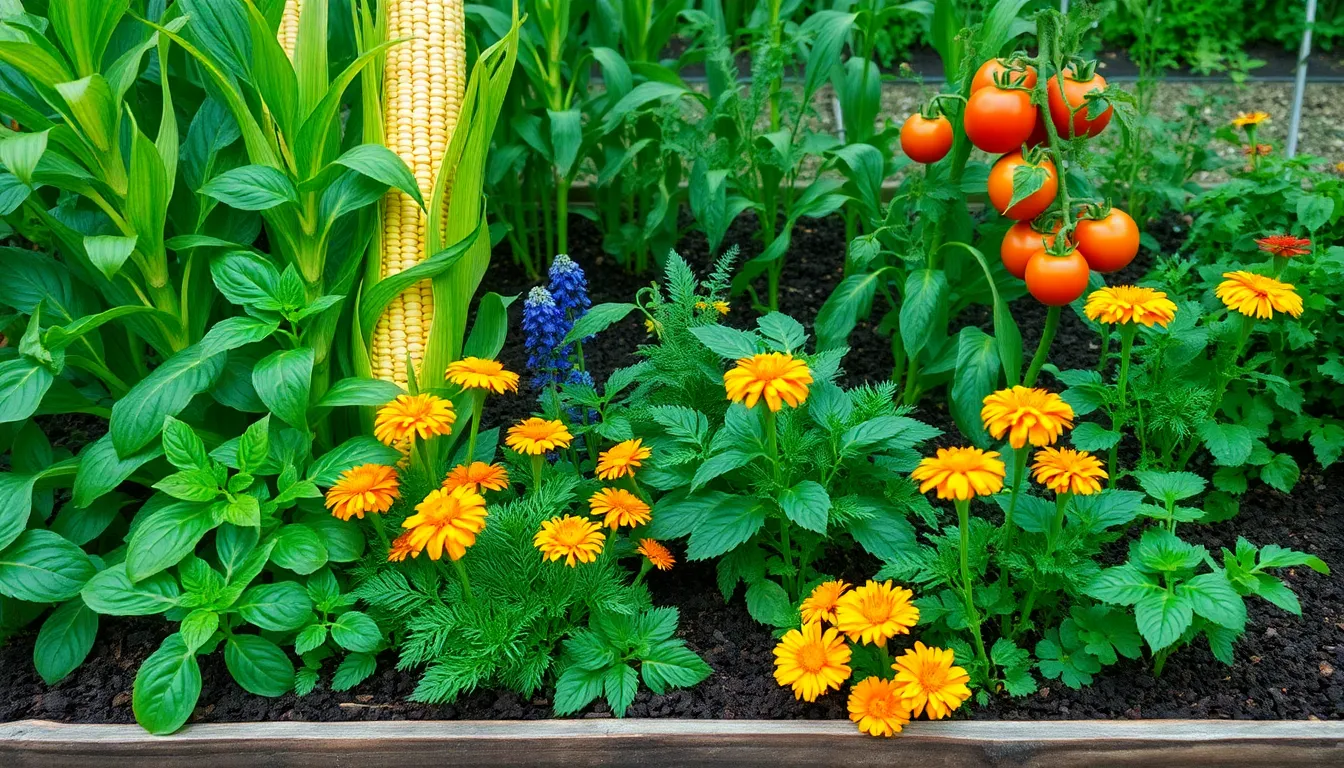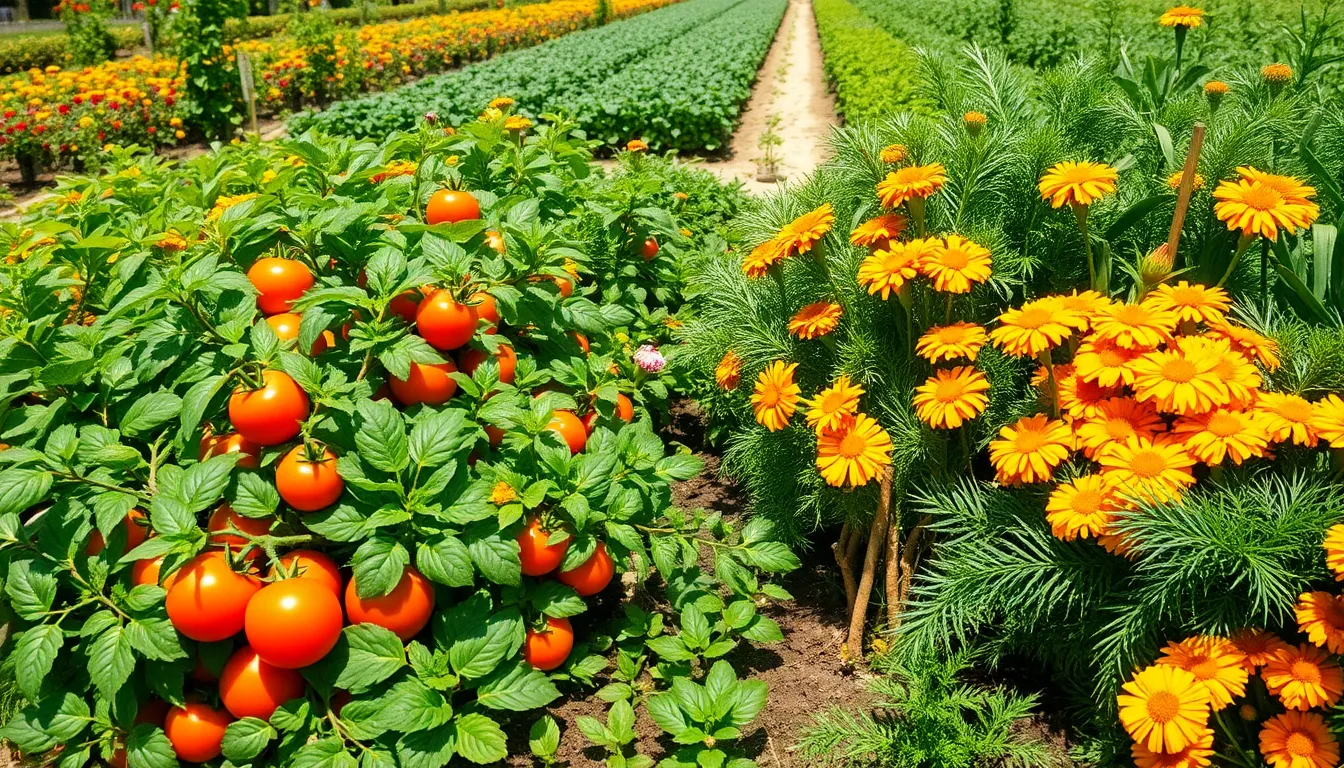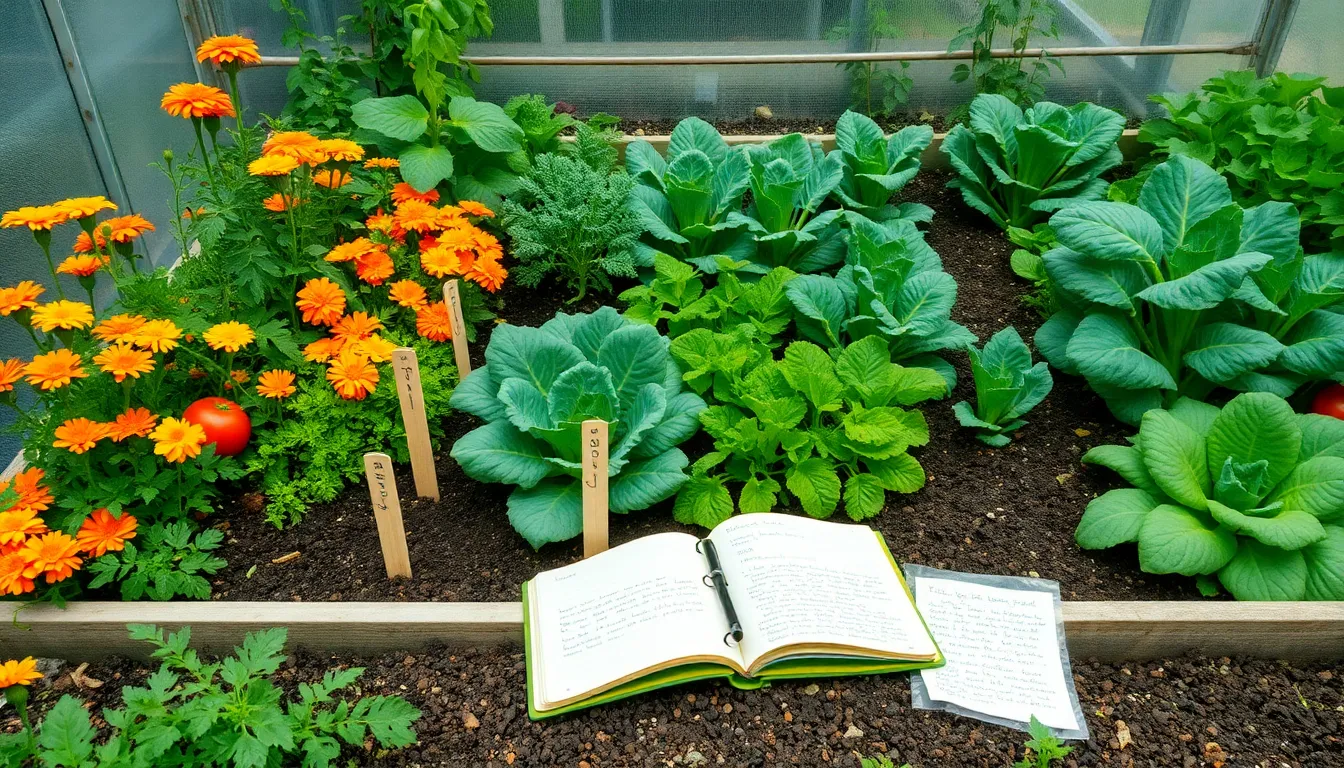Imagine stepping into your garden and seeing a symphony of plants working harmoniously together, boosting each other’s growth and resilience. Companion planting is not just a technique; it’s an artful dance of nature that can transform your vegetable garden into a thriving, efficient ecosystem. Whether you’re sowing your first seeds or have a few growing seasons under your belt, understanding how different plants can support each other opens up a world of possibilities. Companion planting doesn’t just maximize space and yield; it also naturally deters pests and enhances flavor, making your garden not just more productive but also more sustainable.
In this article, we’ll delve into the essentials of companion planting, uncovering time-tested pairings that can elevate your vegetable beds. You’ll discover how marigolds can be your tomatoes’ best friend and why basil might just be the secret ingredient to your pepper patch’s success. We’ll guide you through the fascinating relationships between plants, offering practical tips that you can implement immediately, regardless of your garden’s size. From understanding the subtle interplay of root systems to leveraging the natural pest-repelling properties of certain plants, our comprehensive guide will equip you with the knowledge to make your garden flourish like never before.
Select Compatible Vegetable Partners
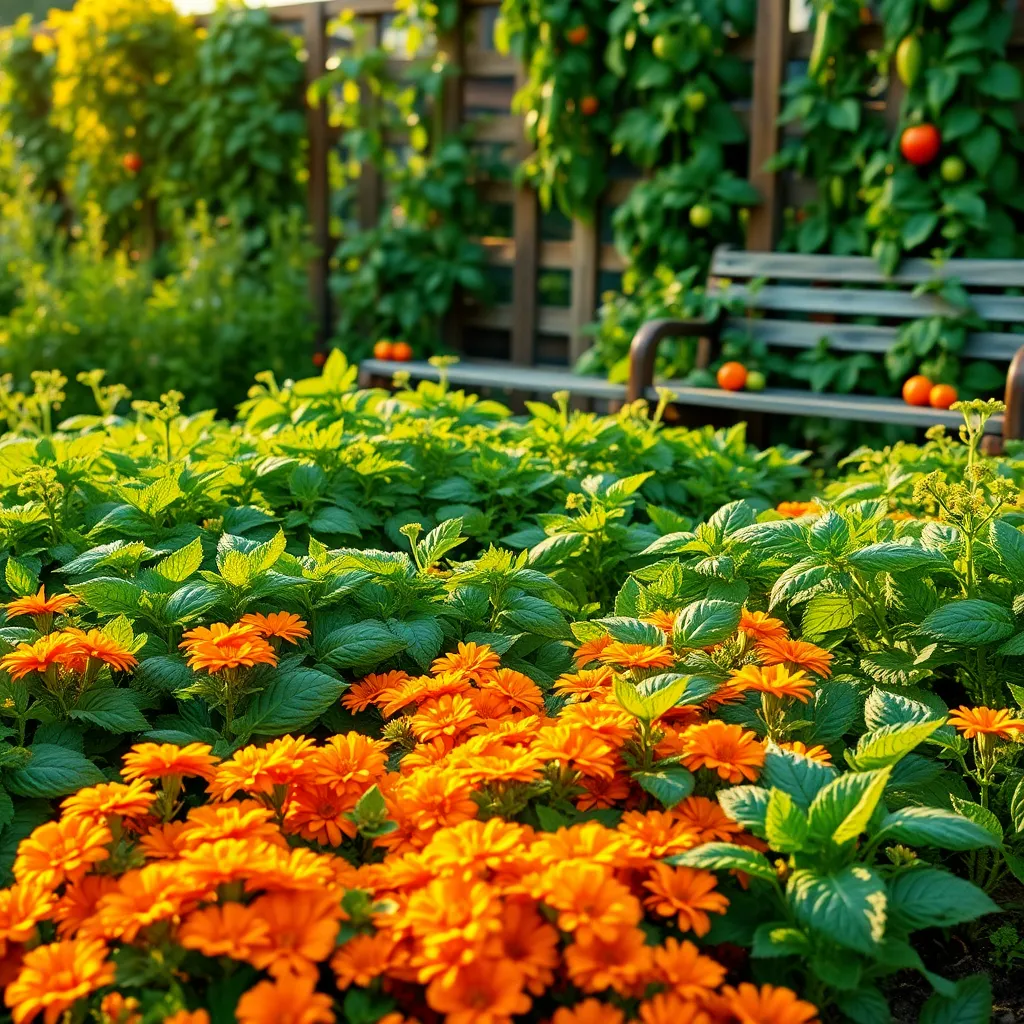
Understanding which vegetables make great partners can significantly boost your garden’s productivity. For instance, pairing tomatoes with basil can deter pests and enhance growth, while also improving the flavor of the tomatoes.
Consider soil preferences when selecting plant partners; some vegetables thrive in similar conditions. For example, both carrots and onions prefer well-drained, sandy soil, making them excellent companions.
Incorporating legumes like peas or beans with nitrogen-hungry plants such as corn can naturally enrich the soil. This symbiotic relationship reduces the need for additional fertilizers and promotes stronger growth.
Advanced gardeners might experiment with planting calendula near brassicas like broccoli and cabbage. This technique can attract beneficial insects that prey on common brassica pests, providing a natural pest control solution.
Plan Your Garden Layout Strategically
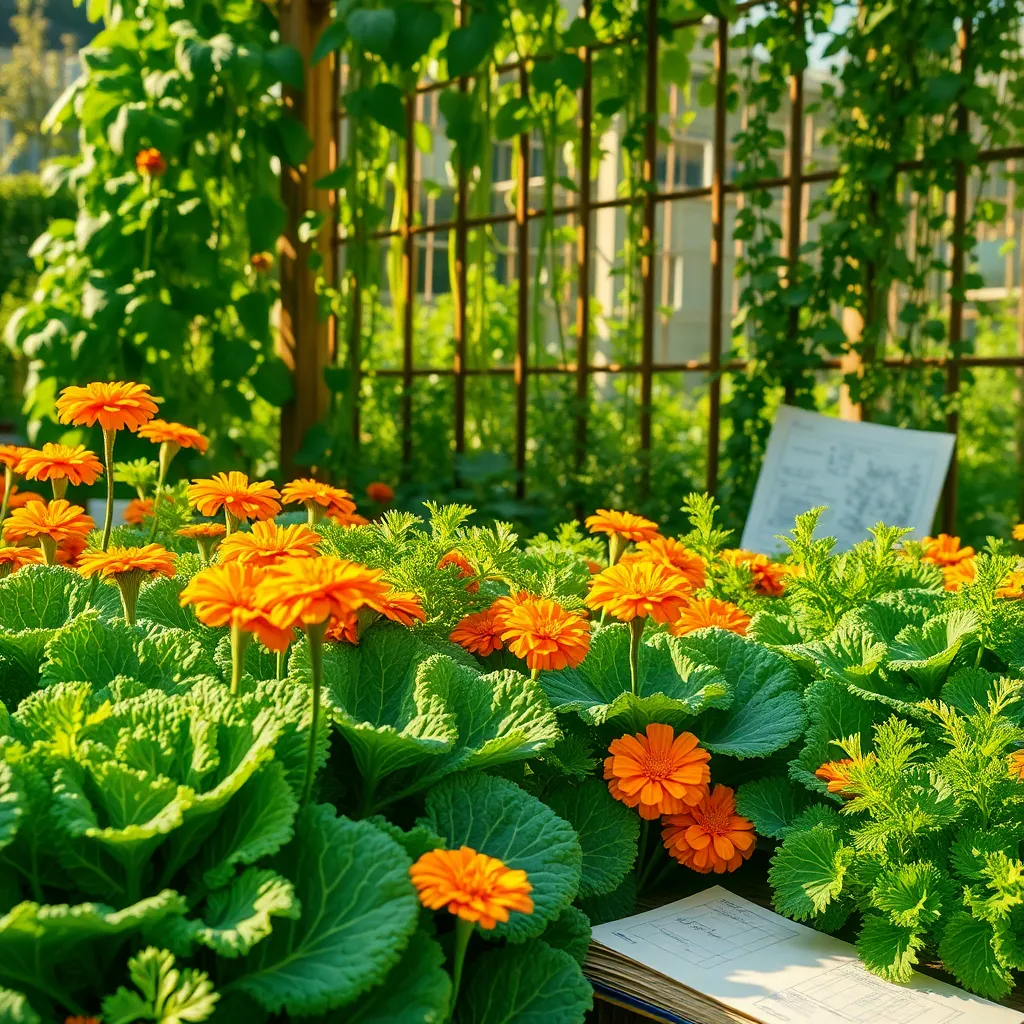
Planning your garden layout strategically is essential for successful companion planting. Start by mapping out your garden space and considering the sunlight patterns and shade areas, as different vegetables have unique light requirements.
Ensure taller plants are positioned to the north or west sides of the garden to prevent them from casting shade on smaller plants. For example, place sun-loving plants like tomatoes and peppers in the sunniest part of the garden, while leafy greens that prefer some shade can be positioned to benefit from the taller plants’ shelter.
Group plants with similar water needs together to optimize your irrigation strategy. This prevents over-watering or under-watering specific areas, ensuring that thirsty plants like cucumbers receive adequate moisture, while drought-tolerant varieties like bush beans do not become waterlogged.
Consider planting in blocks rather than rows to maximize space and improve pollination. This method supports better yields and can reduce the spread of pests, as interplanting with beneficial companions like marigolds or nasturtiums naturally deters common garden pests.
Prepare Soil with Nutrients
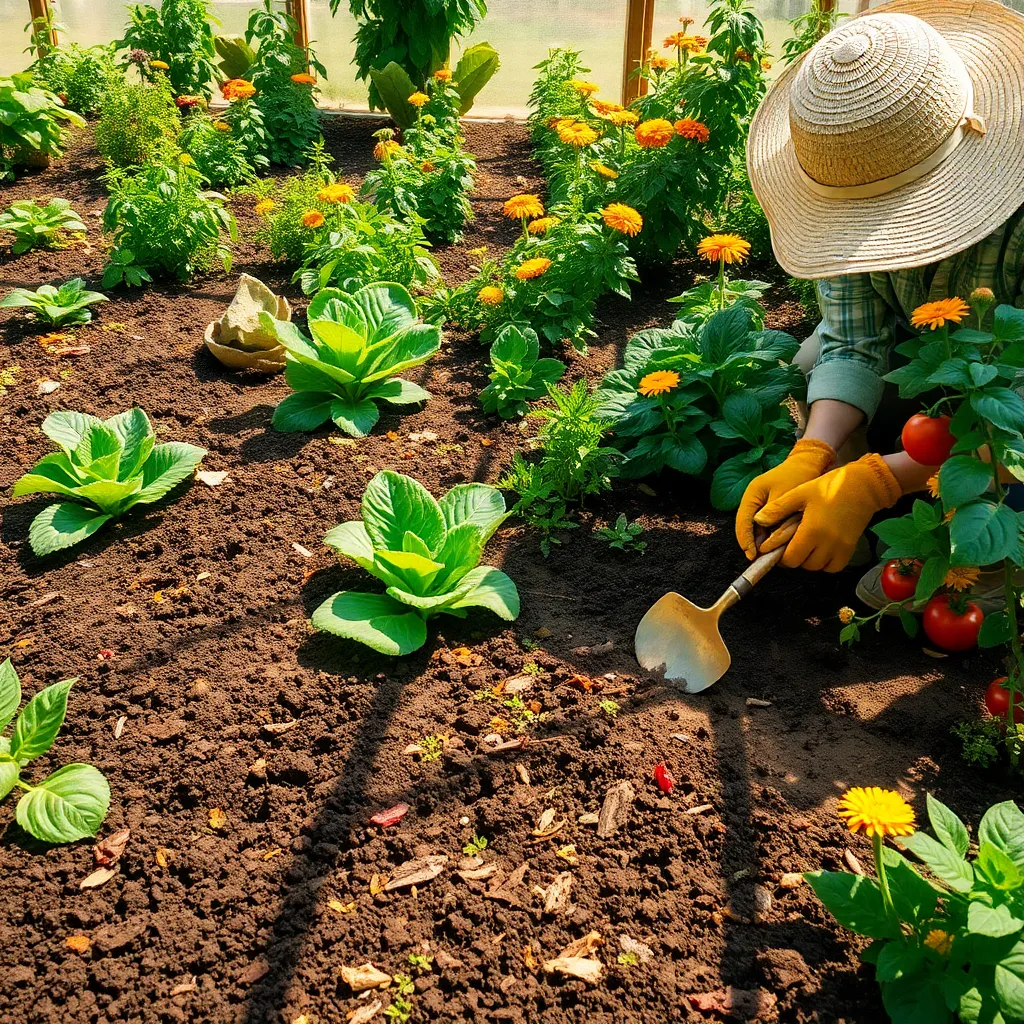
After planning your garden layout, the next crucial step is to prepare your soil with nutrients. Healthy soil is the foundation of a successful garden, providing the essential elements plants need to thrive. Start by testing your soil’s pH and nutrient levels using a soil test kit, which you can easily find at garden centers or online. This will help you understand what amendments are necessary to create the ideal growing environment for your vegetables.
Once you know your soil’s condition, you can begin to enrich it with organic matter. Compost is an excellent choice because it improves soil structure, provides nutrients, and supports beneficial microorganisms. Spread a 2 to 3-inch layer of compost over your garden bed and work it into the top 6 inches of soil using a garden fork or tiller. This not only enhances nutrient availability but also improves drainage, which is crucial for root development.
In addition to compost, consider adding specific amendments to address any deficiencies found in your soil test. For instance, if your soil is low in nitrogen, incorporate well-rotted manure or a nitrogen-rich organic fertilizer. Bone meal is a fantastic option for boosting phosphorus levels, which is important for root and flower development. Always follow the application rates on the product labels to avoid over-fertilization, which can harm plants.
It’s also wise to incorporate a layer of mulch after planting to conserve moisture and suppress weeds. Organic mulches like straw, shredded leaves, or grass clippings break down over time, further enriching your soil. Remember, healthy soil leads to healthy plants, so investing time in soil preparation will pay off during the growing season. With these steps, your garden will be well on its way to producing bountiful harvests.
Plant Seeds with Adequate Spacing
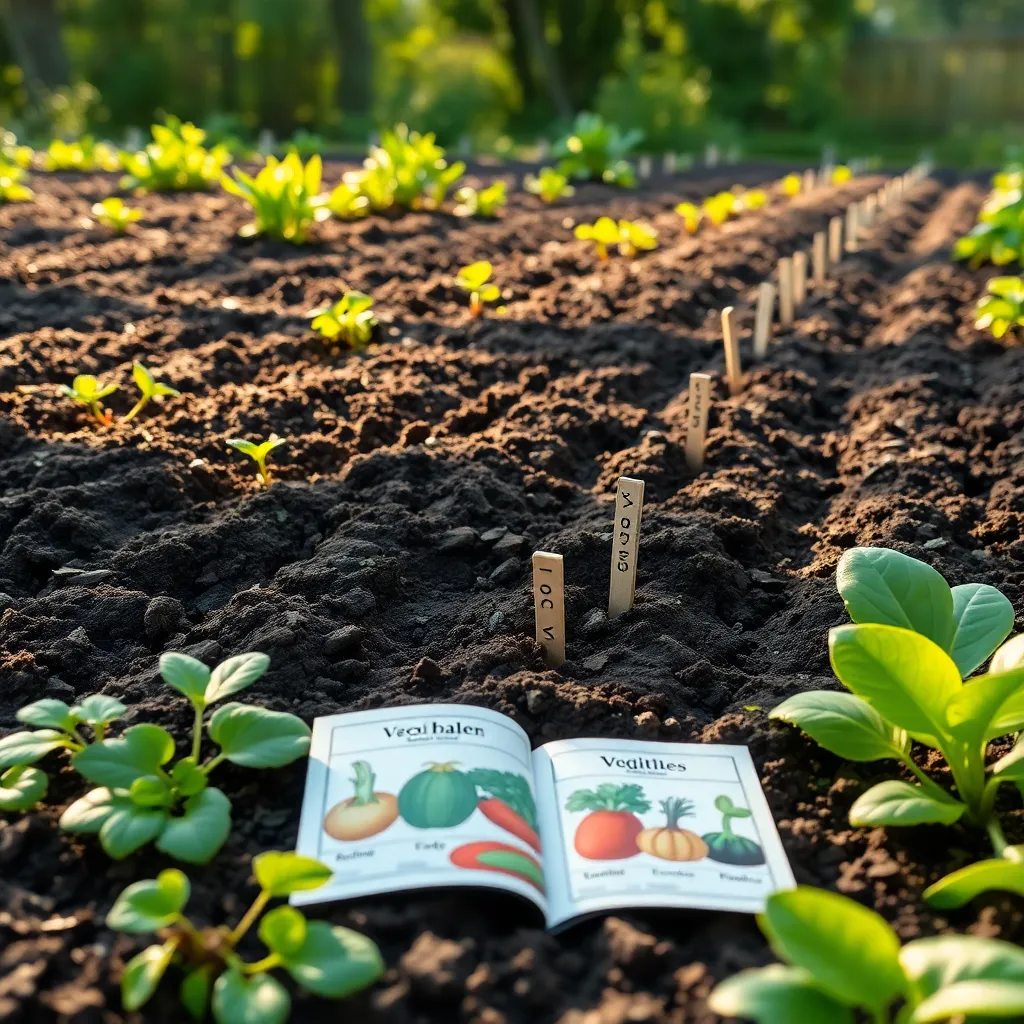
When planting seeds, maintaining adequate spacing is crucial for healthy plant development. Overcrowding can lead to competition for nutrients, water, and sunlight, hindering growth and increasing the risk of disease.
To achieve optimal spacing, consult the seed packet for specific recommendations, as different plants have varying space requirements. For example, lettuce may require only six inches between plants, while larger crops like tomatoes need at least 24 inches apart.
Begin by marking your planting area with a stick or string to ensure even spacing. This helps maintain consistency and provides a clear guide as you sow your seeds.
Incorporate advanced techniques like staggered planting to maximize space usage in smaller gardens. This approach allows you to plant faster-growing crops like radishes in between slower-growing ones like broccoli, optimizing your garden’s yield.
Monitor Growth and Adjust Pairings
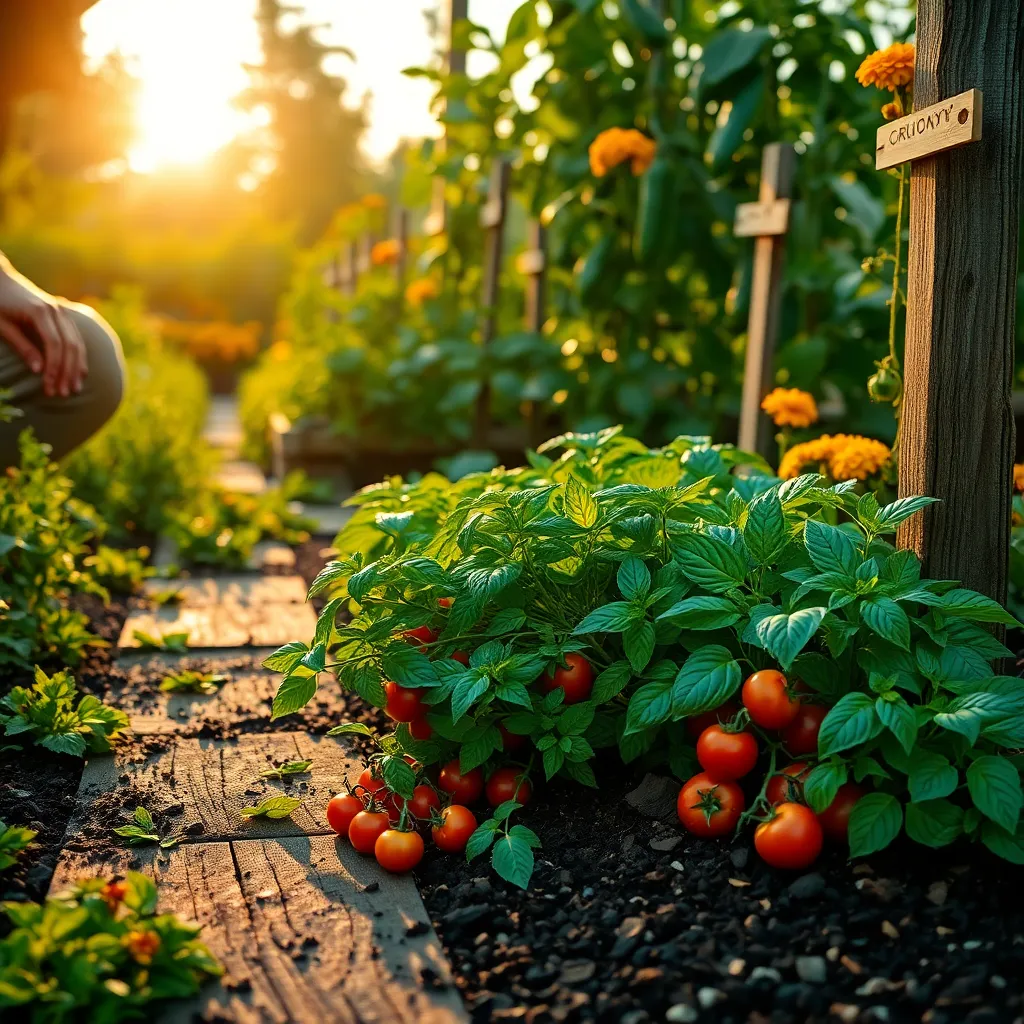
As your plants begin to grow, it’s crucial to monitor their progress regularly. This allows you to identify any signs of stress or nutrient deficiency early, enabling timely intervention to ensure healthy growth.
Observing the interaction between companion plants is equally important. Some combinations might require adjustments if one plant starts to overshadow or outcompete the other, affecting the overall balance and benefits.
Look out for signs of pest infestations or diseases, as these can spread quickly among closely planted companions. Regular inspection makes it easier to manage problems with natural remedies, such as neem oil or insecticidal soap, before they escalate.
For those with more experience, consider experimenting with different companion combinations. This not only helps optimize your garden’s productivity but also contributes to biodiversity, which can enhance pest control and soil health naturally.
Adjusting watering schedules to suit both plants in a pairing is key. Ensure that both plants receive enough moisture without overwatering, using drip irrigation or soaker hoses to maintain consistent soil moisture levels while conserving water.
Finally, soil quality plays a vital role in successful companion planting. Use a well-draining soil enriched with organic matter like compost to support the diverse nutrient needs of different plants in your garden.
Conclusion: Growing Success with These Plants
In this exploration of companion planting for vegetables, we’ve unraveled five key relationship dynamics between plants: mutual support, conflict resolution, space optimization, protection, and nourishment. These foundational principles guide how vegetables thrive together, showcasing the importance of understanding and nurturing connections. Just as plants flourish through thoughtful pairing, so too can our relationships, be they with partners, friends, or family.
To start applying these insights right away, consider identifying one plant pairing from your garden (or life) that could benefit from a little extra attention or adjustment. Perhaps there’s a partnership that needs more space or a nurturing bond that could offer protection elsewhere.
As you embark on this journey of intentional relationship cultivation, be sure to bookmark this article for quick reference. It can serve as a valuable resource whenever you need a reminder of how to foster connections that are as productive and harmonious as a well-tended garden.
Remember, the success of any relationship—whether in the garden or in life—is rooted in the care and attention you give it today. With each step, you are building a future of lush, thriving connections.

